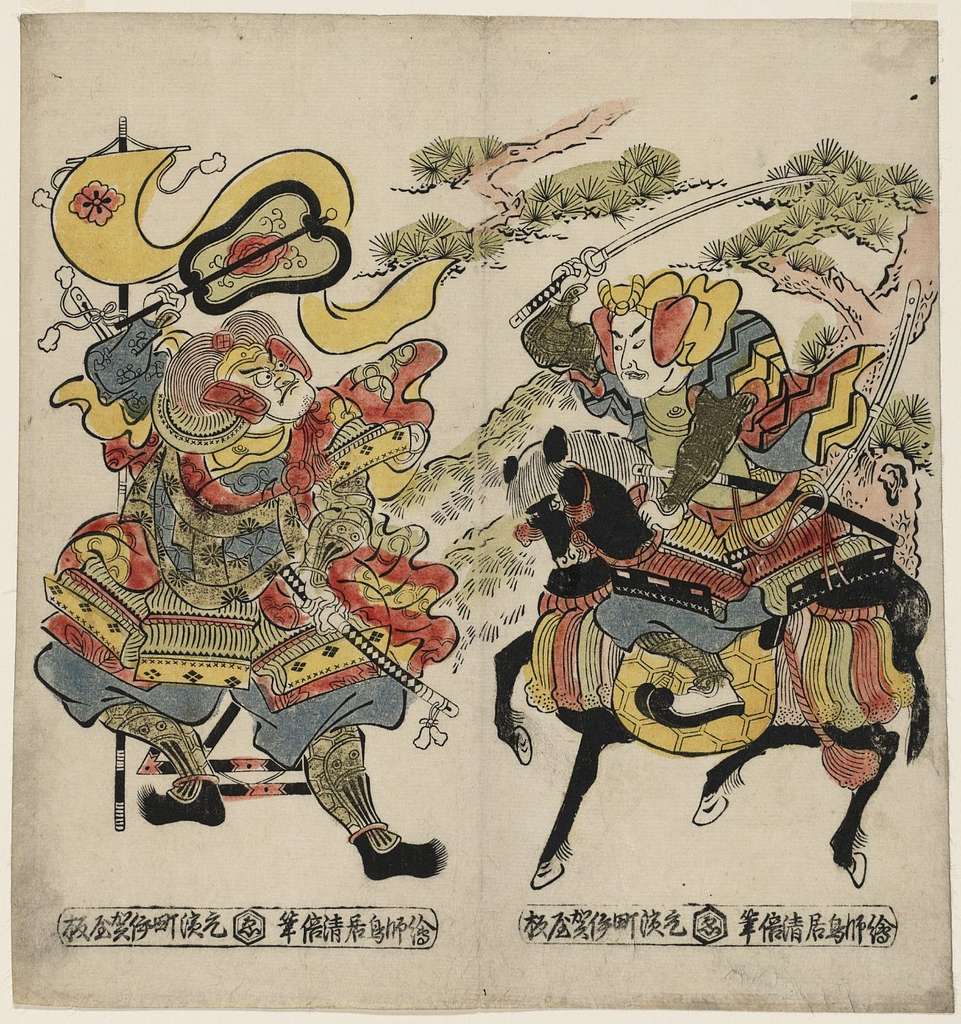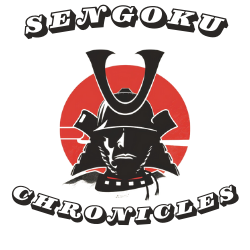Introduction
The Sengoku period, often described as the “Age of Warring States,” remains one of the most fascinating and tumultuous eras in Japanese history. Stretching from the mid-15th century to the late 16th century, it was a time characterized by social upheaval, political intrigue, and almost constant military conflict. Amidst this backdrop of chaos, a myriad of formidable warlords emerged, each vying for power and dominion over the fragmented Japanese archipelago. Among these daimyōs, few names are as resonant and admired as Takeda Shingen, the Tiger of Kai.
Takeda Shingen, born into the prestigious Takeda clan in 1521, was not just a mere participant in the Sengoku period’s relentless power struggles; he was a defining force of his time. His military prowess, strategic genius, and administrative capabilities not only carved out a significant dominion for him in the mountainous region of Kai (modern-day Yamanashi Prefecture) but also left an indelible mark on Japanese military and cultural history. Shingen’s life and campaigns epitomize the era’s complex interplay of loyalty, ambition, and honor.
This blog post seeks to delve into the life of Takeda Shingen, exploring his rise to power, his military achievements, his governance, and his enduring legacy. By examining the key events and strategies that defined his rule, we aim to uncover the layers behind the legend of the Tiger of Kai. Through this exploration, Shingen emerges not just as a figure of historical significance but as a symbol of the Sengoku period itself—a time when the quest for power led to both devastating conflict and remarkable feats of leadership and innovation.
Early Life and Rise to Power
Takeda Shingen’s story begins in 1521, in the heart of the Sengoku period, a time when Japan was fragmented into competing territories ruled by powerful warlords. Born into the prestigious Takeda clan in the province of Kai, Shingen was initially named Takeda Tarō Katsuyori. His early years were shaped by the traditions and expectations of a warrior class preparing to navigate the turbulent waters of Japanese feudal politics.
Origins in the Takeda Clan

The Takeda clan, with its long and storied history, was well-established in the power dynamics of the region. Shingen’s father, Takeda Nobutora, was a formidable leader in his own right, known for his military campaigns and efforts to consolidate Takeda’s power. From an early age, Shingen was immersed in the art of war and governance, receiving education that blended martial skills with the strategic acumen necessary for leadership.
Path to Leadership
Shingen’s journey to power was neither direct nor uncontested. At the age of 21, in a bold move that would define his approach to leadership, Shingen orchestrated a coup against his father. This decisive action was fueled by internal family disputes and Nobutora’s alleged mismanagement of the clan’s affairs. With the support of key allies within the clan, Shingen successfully exiled Nobutora, taking the reins of leadership into his own hands. This transition marked the beginning of Shingen’s era, signaling a shift towards aggressive expansion and strategic governance.
Political Alliances and Early Military Campaigns
With his authority established, Shingen embarked on a series of military campaigns aimed at expanding Takeda territory and influence. Recognizing the importance of alliances in the Sengoku period’s intricate tapestry of loyalties and betrayals, Shingen skillfully navigated his relationships with neighboring clans. His early campaigns were marked by both aggression and diplomacy, as he sought to secure Takeda’s position within the volatile landscape of the era.
One of Shingen’s notable early achievements was his campaign against the Murakami and Ogasawara clans, which expanded Takeda’s influence into the Shinano province. These victories were not just military triumphs but also strategic masterstrokes, allowing Shingen to control critical trade routes and resources.
Throughout these early years, Shingen’s leadership style evolved—a blend of martial prowess, strategic foresight, and administrative acumen. His ability to unite his followers and command their loyalty set the stage for the legendary status he would eventually achieve. Shingen’s rise to power was a testament to his vision for the Takeda clan, marking the beginning of a period of significant influence and expansion under his leadership.
As Takeda Shingen’s influence grew, so did the complexity of his challenges. His early life and ascent to power laid the foundation for what would become a legendary career as a daimyō—a career characterized by fierce battles, shrewd political maneuvers, and a lasting impact on the course of Japanese history.
Military Campaigns and Strategies
Takeda Shingen’s legacy is profoundly marked by his military campaigns and the innovative strategies he employed, which showcased his genius as a tactician and his understanding of the complexities of warfare during the Sengoku period. His campaigns were not merely about expansion but also about establishing Takeda as a dominant force in the region, capable of challenging even the most powerful daimyōs of his time.
Overview of Shingen’s Military Doctrine
Shingen’s military doctrine was ahead of its time, emphasizing mobility, cavalry charges, and the strategic use of terrain. He is often credited with perfecting the use of cavalry in a period where many armies relied heavily on infantry and archers. Shingen’s troops were trained to fight as a cohesive unit, which was a departure from the individual combat that characterized earlier periods. His famous “Furinkazan” banner, bearing the words “Fast as the wind, quiet as a forest, aggressive as fire, and immovable as a mountain,” encapsulates his approach to warfare: striking swiftly and powerfully, yet with strategic precision and immovable defense.
Key Battles and Conflicts
One of the most emblematic series of confrontations in Shingen’s military career were the Battles of Kawanakajima against his rival, Uesugi Kenshin. These battles, fought over the control of the Shinano province, were not only significant for their sheer ferocity and tactical brilliance but also for the mutual respect that developed between the two adversaries. The fourth battle, considered the most intense, showcased Shingen’s strategic mind and his ability to adapt to the changing dynamics of the battlefield.
Shingen’s confrontations extended beyond Kenshin, as he consistently sought to expand his influence. His campaigns against the Hojo, Imagawa, and Tokugawa clans were crucial in establishing the Takeda clan’s dominance in the region. Each campaign was carefully planned, with Shingen leveraging alliances, espionage, and his understanding of terrain to gain an upper hand.
Shingen’s Cavalry: Composition, Tactics, and Impact
The backbone of Shingen’s army was his cavalry, known for their discipline, speed, and effectiveness in battle. Shingen’s innovation lay in his use of mounted warriors, who were not only skilled in horseback but also adept with spears and bows, allowing for a versatile and mobile fighting force. This emphasis on cavalry was revolutionary at the time and became a hallmark of Takeda’s military strength.
The impact of Shingen’s military strategies extended beyond his lifetime, influencing the development of Japanese warfare. His emphasis on mobility, combined arms tactics, and the strategic use of terrain became lessons for future generations of military leaders.
Takeda Shingen’s military campaigns and strategies demonstrate a blend of bold ambition and careful planning. His ability to foresee the movements of his enemies and to adapt his tactics accordingly made him one of the most formidable warlords of the Sengoku period. Shingen’s legacy in military strategy continues to be studied and admired, a testament to his genius as a tactician and his indelible impact on the art of war.
Governance and Administration
While Takeda Shingen is often celebrated for his military prowess, his skills as an administrator and governor played an equally critical role in the prosperity and longevity of the Takeda domain. Shingen’s governance was characterized by innovation, strategic planning, and a keen sense for the welfare of his people, which helped stabilize and enrich his lands amidst the turmoil of the Sengoku period.
Economic Policies
Understanding that the strength of his military campaigns depended heavily on the economic stability of his domain, Shingen implemented several reforms aimed at enhancing agricultural productivity and encouraging trade. He conducted land surveys to assess and optimize agricultural output, a move that allowed for more accurate taxation and led to the improvement of irrigation systems. This not only increased agricultural yields but also ensured a steady supply of resources for his army and the populace.
Shingen also promoted trade by securing and expanding trade routes within and beyond his domain. By fostering a safe and stable environment for merchants, he attracted commerce from other parts of Japan, bringing wealth and prosperity to his lands. These economic policies not only strengthened the Takeda clan’s financial base but also improved the living conditions of his subjects, earning Shingen a reputation as a benevolent ruler.
Military Administration
Takeda Shingen’s military administration was as innovative as his tactics on the battlefield. He reorganized the traditional samurai system, emphasizing merit and ability over hereditary status. This not only incentivized loyalty and excellence among his warriors but also optimized the military’s effectiveness. Shingen established a rigorous training regimen for his troops, ensuring that his army remained one of the most formidable forces in Japan.
The Takeda cavalry, the centerpiece of his army, was supported by a sophisticated logistical system that allowed for quick mobilization and sustained campaigns. Shingen’s administrative acumen ensured that his forces were well-equipped, well-fed, and well-informed, factors that were crucial to his military successes.
Contributions to Culture and Religion
Shingen’s governance extended beyond economic and military considerations. He was a patron of the arts and culture, recognizing their importance in fostering a sense of identity and pride among his people. Temples and shrines flourished under his rule, as Shingen supported Buddhist institutions and Shinto shrines, which played a significant role in the social and spiritual lives of his subjects.
Moreover, Shingen encouraged the development of education and the arts within his domain, sponsoring the construction of schools and supporting artists and craftsmen. These contributions helped cultivate a vibrant culture that would endure beyond his reign, enriching the Takeda legacy.
Takeda Shingen’s approach to governance and administration showcased his multifaceted leadership qualities. His policies not only bolstered the economic and military strength of his domain but also improved the welfare of his people and enriched their cultural lives. Through his innovative governance, Shingen managed to create a stable and prosperous domain that stood out as a beacon of stability and prosperity in the tumultuous Sengoku period. His legacy as an administrator is a testament to his vision, demonstrating that his achievements extended far beyond the battlefield.
Rivalries and Alliances
The Sengoku period was a complex era of shifting alliances and intense rivalries, and Takeda Shingen was at the heart of this dynamic political landscape. His ability to navigate these relationships was a testament to his strategic genius and contributed significantly to his legend.
The Complex Relationship with Uesugi Kenshin

Perhaps the most famous of all Shingen’s relationships was his rivalry with Uesugi Kenshin, the Dragon of Echigo. This rivalry transcended mere military conflict, embodying a deep mutual respect between two of the period’s most formidable warlords. They clashed in the Battles of Kawanakajima, a series of five conflicts that are often celebrated for their military strategy and the chivalry displayed by both leaders. Despite their rivalry, Shingen and Kenshin reportedly exchanged gifts and corresponded, highlighting a level of respect and acknowledgment of each other’s prowess and honor that was rare in such turbulent times.
Alliances with Other Daimyōs
Shingen’s ability to form and leverage alliances was key to his strategic successes. Early in his career, he aligned with the Imagawa and Hojo clans through marriage and diplomatic agreements, securing his flanks and enabling his focus on expansion into Shinano and later into the Kanto region. These alliances were not static, however, and shifted as the balance of power changed. Shingen’s adeptness at forming timely alliances—and knowing when to dissolve them—played a crucial role in the expansion of his domain and in his campaigns against rivals like the Oda and Tokugawa clans.
The Conflict with Tokugawa Ieyasu
One of Shingen’s most consequential rivalries was with Tokugawa Ieyasu. This conflict was not only significant due to the eventual prominence of the Tokugawa shogunate but also because it demonstrated Shingen’s military and strategic capabilities against a rising power. The Battles of Mikatagahara, where Shingen’s forces significantly defeated Tokugawa’s army, underscored his military acumen and posed a serious challenge to Tokugawa’s ambitions. Though Shingen’s death prevented a decisive conclusion to their conflict, his campaigns against Ieyasu significantly impacted the power dynamics in the region.
Implications for the Takeda Clan
Shingen’s rivalries and alliances had profound implications for the Takeda clan, shaping its territorial ambitions, military engagements, and political stature. His ability to simultaneously manage multiple fronts, negotiate alliances, and engage in strategic battles allowed the Takeda clan to navigate the complexities of the Sengoku period with remarkable success. However, these relationships also entailed commitments that stretched the clan’s resources and obligated them to partake in conflicts that shaped their destiny in the volatile landscape of the era.
Through his masterful handling of rivalries and alliances, Takeda Shingen not only secured his place as one of the era’s most respected leaders but also ensured that his clan would remain a significant force in Japanese history. His legacy in this regard is a testament to his strategic foresight, his diplomatic skill, and his capacity to balance the demands of warfare with the necessities of alliance-building.
Death and Legacy
Takeda Shingen’s death in 1573 marked the end of an era for the Takeda clan and the Sengoku period at large. The circumstances surrounding his death have been the subject of much speculation and legend, reflecting the mythical status he had achieved even in his own time.
Circumstances of Shingen’s Death
Historical accounts suggest that Shingen died at the age of 53, but the cause of his death remains a matter of debate among historians. Some sources claim he succumbed to injuries sustained during a sniper attack at the Siege of Noda Castle, while others suggest illness or an old wound might have been the cause. What is undisputed, however, is the impact his death had on the Takeda clan and its future ambitions. Shingen had been at the height of his power, and his leadership was integral to the clan’s military and administrative strength.
Immediate Aftermath
The immediate aftermath of Shingen’s death saw the Takeda clan grappling with the loss of their charismatic leader. His son, Takeda Katsuyori, succeeded him but struggled to maintain the momentum his father had built. The clan faced increasing pressure from rivals, notably Oda Nobunaga and Tokugawa Ieyasu, who sought to capitalize on the power vacuum Shingen’s death created. Despite valiant efforts, the Takeda clan could not replicate the successes of Shingen’s era, leading to its eventual decline.
Shingen’s Legacy
Shingen’s legacy, however, transcends the fortunes of the Takeda clan. He is remembered as one of the most formidable and respected daimyōs of the Sengoku period. His military strategies, particularly his use of cavalry and innovative tactics, have been studied by military historians and strategists worldwide. The “Furinkazan” strategy, inspired by Sun Tzu’s “The Art of War,” continues to symbolize the ideals of agility, strength, and wisdom in battle.
Beyond his military achievements, Shingen’s governance and economic policies left a lasting impact on the regions he controlled. His efforts to improve agriculture, trade, and infrastructure contributed to the prosperity of his territories, benefits that endured beyond his lifetime.
Culturally, Takeda Shingen has been immortalized in Japanese arts and literature. He figures prominently in kabuki and bunraku, traditional Japanese theater forms, and his life and battles have been the subject of numerous films, television series, and novels. His rivalry with Uesugi Kenshin, in particular, has become emblematic of the era’s chivalry and the complex relationships between samurai lords.
In the modern era, Takeda Shingen is celebrated in festivals and commemorated in monuments across Japan, a testament to his enduring legacy as a leader, warrior, and statesman. His life continues to inspire and captivate those interested in Japan’s rich history, embodying the complexities and the spirit of the Sengoku period.
Conclusion
Takeda Shingen’s life and legacy encapsulate the essence of the Sengoku period—a time marked by fierce loyalty, strategic genius, and the relentless pursuit of power. Through his military innovations, adept governance, and the complex web of alliances and rivalries he navigated, Shingen left an indelible mark on Japanese history. His story is not merely one of conquest and warfare but also of leadership, vision, and cultural impact.
Shingen’s military strategies and campaigns showcased his brilliance as a tactician, influencing not only the outcomes of his battles but also the future of warfare in Japan. His administrative policies ensured the prosperity of his domains, demonstrating a commitment to the welfare of his people that transcended the typical warlord’s ambitions for power. The respect and loyalty he commanded, both from his allies and adversaries, speak volumes about his character and leadership.
Beyond the battlefield and the council chamber, Shingen’s legacy lives on in the cultural fabric of Japan. His life has inspired countless works of art, literature, and folklore, making him a figure of enduring fascination and respect. The festivals and monuments dedicated to his memory today serve as a testament to his lasting impact on Japanese culture and history.
In reflecting on the life of Takeda Shingen, we are reminded of the complexities and the dynamism of the Sengoku period. His story is a compelling chapter in the history of Japan, illustrating the blend of military might, political acumen, and cultural influence that defines the era. Takeda Shingen, the Tiger of Kai, remains a symbol of strength, wisdom, and the enduring appeal of the samurai spirit.
Beyond the Battlefield
Comparison with Contemporaries
Takeda Shingen’s era was marked by the presence of numerous influential daimyōs, each contributing to the rich tapestry of Japan’s history during the Sengoku period. A comparative analysis of Shingen with his contemporaries, such as Oda Nobunaga, Uesugi Kenshin, and Tokugawa Ieyasu, offers insights into his unique approach to leadership and warfare. While Nobunaga is often celebrated for his ruthlessness and innovative military tactics, Kenshin is revered for his honor and strategic genius. Tokugawa, on the other hand, is known for his political savvy and the establishment of a lasting shogunate. By examining Shingen’s strategies, governance, and personal ethos in the context of these figures, we can appreciate the diversity of leadership styles that characterized the era and how each contributed to the unification of Japan.
Takeda Shingen in Popular Culture

Takeda Shingen’s legacy extends well into popular culture, where he has been portrayed as both a fearsome warrior and a wise leader. From classic samurai films to modern anime and video games, Shingen’s character has been adapted and reimagined to captivate new generations. An exploration of these portrayals can reveal how historical figures are mythologized and how Shingen’s persona continues to resonate with audiences today. This section could delve into specific examples of Shingen in media, examining how these adaptations reflect the values and interests of their times.
Visiting Shingen’s Legacy
For history enthusiasts and travelers alike, visiting sites associated with Takeda Shingen offers a tangible connection to Japan’s storied past. From the ruins of Tsutsujigasaki Castle, the Takeda clan headquarters, to the serene setting of Erin-ji Temple, where Shingen is believed to be buried, these sites provide a backdrop to imagine the life and times of the Tiger of Kai. Additionally, the Kawanakajima battlefield and the Takeda Shrine offer insights into his military campaigns and personal beliefs. This section could serve as a travel guide for those wishing to explore the legacy of Takeda Shingen firsthand, highlighting key locations, museums, and annual festivals that celebrate his life and achievements.
Through these additional sections, the blog post would not only offer a comprehensive look at Takeda Shingen’s life and legacy but also engage with the broader cultural and historical context of the Sengoku period, providing readers with a multifaceted understanding of one of Japan’s most legendary figures.
Additional Resources
Books
- “Samurai Leaders of Japan” by Stephen Turnbull: This book offers comprehensive profiles of Japan’s most influential samurai leaders, including Takeda Shingen. Turnbull’s work is known for its detailed research and engaging narrative style.
- “The Samurai, A Military History” by Stephen Turnbull: Another work by Turnbull, this book provides a broader look at the military aspects of the samurai class, with insights into the tactics, battles, and leadership styles of figures like Shingen.
- “Takeda Shingen: The Tiger of Kai” by Jasper Sharp: This biography focuses specifically on Takeda Shingen, exploring his military strategies, governance, and impact on Japanese history.
Documentaries and Films
- “Kagemusha (The Shadow Warrior)” directed by Akira Kurosawa: While not a historical documentary, this film is inspired by the events surrounding Takeda Shingen’s death and offers a visually stunning portrayal of the Sengoku period.
- “Battle of Nagashino 1575: Shingen’s Legacy” – A documentary that explores the pivotal Battle of Nagashino and its implications for the Takeda clan after Shingen’s death.
Websites and Online Resources
- Samurai Archives: An extensive online resource that features articles, historical texts, and forums dedicated to the study of samurai history, including the life of Takeda Shingen.
- Sengoku Expo: A virtual exhibition that provides detailed articles and resources on the Sengoku period, with sections devoted to key figures and battles.
Museums and Historical Sites
- Takeda Shrine, Kofu, Yamanashi: Dedicated to Takeda Shingen, this shrine is located on the site of the former Tsutsujigasaki Castle, the Takeda family residence.
- Kawanakajima Battlefield, Nagano Prefecture: Though much has changed since the time of the battles, visiting the site can provide a sense of the historical context and geography of these famous clashes.
Academic Journals
- Journal of Japanese Studies: Offers scholarly articles on various aspects of Japanese history and culture, occasionally featuring research on the Sengoku period and notable figures like Takeda Shingen.
Exploring these resources can offer a richer understanding of Takeda Shingen’s contributions to Japanese history and the enduring fascination with his life and the era he dominated.

![Takeda Shingen Known as the "Tiger of Kai", he was one of the most powerful daimyo of the late Sengoku period, and credited with exceptional military prestige.[1] Shingen was based in a poor area with little arable land and no access to the sea, but he became one of Japan's leading daimyo. His skills are highly esteemed and on par with Mōri Motonari.](https://sengokuchronicles.com/wp-content/uploads/2024/03/WhatsApp-Image-2024-03-22-at-15.53.53-e1711090748293.jpeg)